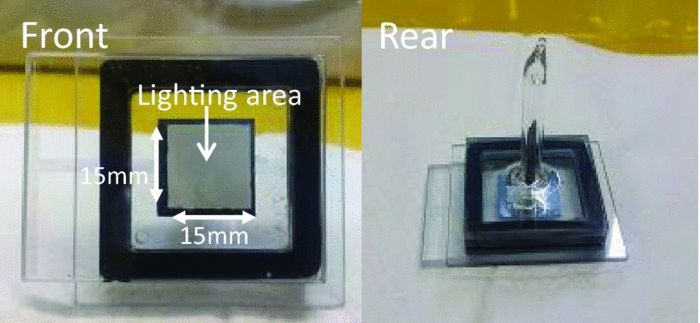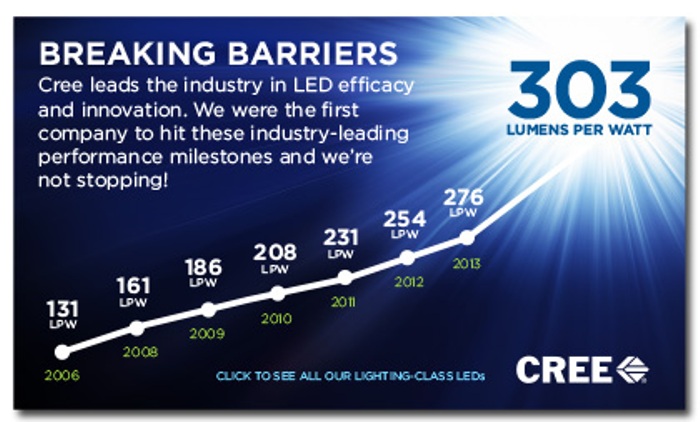Carbon Nanotubes Can Be Used to Produce Lighting Devices Similar to LEDs

Image from Rev. Sci. Instrum. 85, 104704 (2014); http://dx.doi.org/10.1063/1.4895913 via AIR Review of Scientific Instruments
This new lighting technology puts the literal “organic” (carbon-based) in organic lighting. Researchers from Tohoku University and DOWA Holdings Co. Ltd. have produced a new lighting device that is similar to LEDs does not act in the same way and is using carbon nanotubes.
Light emitting diodes have already surpassed fluorescent lamps in power efficiency. The brighter the LEDs are, the more efficient they become in comparison to CFLs. While there are still a number of advantages and disadvantages of LEDs vs. CFLs, vice versa, it is safe to assume that choosing an LED lighting product nowadays cannot be considered a bad decision. However, the reign of LEDs as the most efficient lighting devices could already be challenged this early. Nanotechnology is bringing another technological marvel this time in the area of lighting. Carbon electronics and nanotechnology have been made to work together to develop new energy-saving flat panel lights. As presented in the journal Review of Scientific Instruments, in a research titled “Plannar Light Source Using a Phospor Screen with Single-Walled Carbon Nanotubes as Field Emitters,” researchers have been able to fabricate and optimize a device in a diode structure which is based on a phosphor screen and single-walled carbon nanotubes as electrodes.
This research lists Sharon Bahena-Garrido, Norihiro Shimoi, Yasumitsu Tanaka, and Kazuyuki Tohji of the Tohoku University Graduate School of Environmental Studies; Daisuke Abe of DOWA Holdings Co. Ltd.; and Toshimasa Hojo of the Tohoku University Graduate School of Engineering.
Phosphor SWCNTs in a Simple Diode Structure
This new lighting technology is a plannar light source device that uses a phosphor screen with single-walled carbon nanotubes (SWCNTs) serving as field emitters in a simple diode structure with a cathode containing SWCNTs dispersed into an organic In2O3–SnO2 precursor solution and a non-ionic chemical (comparable to a soap) serving as a surfactant. This SWCNT-bearing cathode was produced separately and simply “painted” onto the positive electrode part of the device and scratched using a sandpaper to create a surface that can generate a large, stable, and homogenous emission current with low energy consumption.
Brightness and Efficiency
The researchers claim that the device can produce 60 lumens per watt. This is indeed a good amount of brightness although it pales in comparison to the 300+ lumens per watt brightness and efficiency level achieved by renowned LED manufacturer Cree. The average power efficiency for most LED lighting devices at present is around 100 lumens per watt while it is around 40 lumens per watt for OLEDs or organic LEDs used in displays.
Difference from LEDs
Aside from the materials used for this light-producing carbon nanotube technology, it is different from LEDs because it is not based on a diode system. It may have been created using a diode-like structure but it is not composed of layers of semiconductors. Instead, it employs luminescence systems that act like cathode ray tubes. The minute carbon nanotubes serve as the cathodes while the phosphor screen in a vacuum cavity serves as the anode.
The way this carbon nanotube device produces light is through a phenomenon referred to as “field emission,” wherein high speed beams of electrons are released through the sharp nanotube tips. These beams of electrons then hit the phosphor screen, causing it to glow. Field emission has been gaining a good deal of attention from scientists who are looking for more efficient electron sources since it is capable of providing intense electron beams (around a thousand times denser than those of conventional thermionic cathode) without requiring so much power. Field emission also yields more directional and easily controllable streams of electrons.
According to one of the researchers involved in the project, Norihiro Shimoi, these new light-producing device has the advantages of not flickering and having a greatly homogeneous brightness.
Carbon Nanotubes as Electron Field Emitters
Carbon nanotubes are increasingly becoming promising materials for electron field emitters because of their nano-scale needle shape, excellent chemical stability, mechanical strength, and thermal conductivity. According to Shimoi, the resistance of a cathode electrode with highly crystalline single-walled carbon nanotubes (SWCNT) is very low, making it highly applicable for the production of a flat panel device with lower energy loss. There have been several attempts to create light sources that make use of nanotubes but only Shimoi’s group, as Shimoi claims, has successfully created the more desirable product.
![By Bin im Garten (Own work (own picture)) [CC-BY-SA-3.0 (http://creativecommons.org/licenses/by-sa/3.0)], via Wikimedia Commons](https://techtheday.com/wp-content/uploads/2014/03/LED-lighting-designs.jpg)
By Bin im Garten (Own work (own picture)) [CC-BY-SA-3.0 (http://creativecommons.org/licenses/by-sa/3.0)], via Wikimedia Commons
The methodologies and lighting technology advances brought about by this new carbon nanotube-based lighting device provide the advantages of lower production cost, a stable process, and the ability to fabricate large-area but uniformly thin films that can produce illumination.
